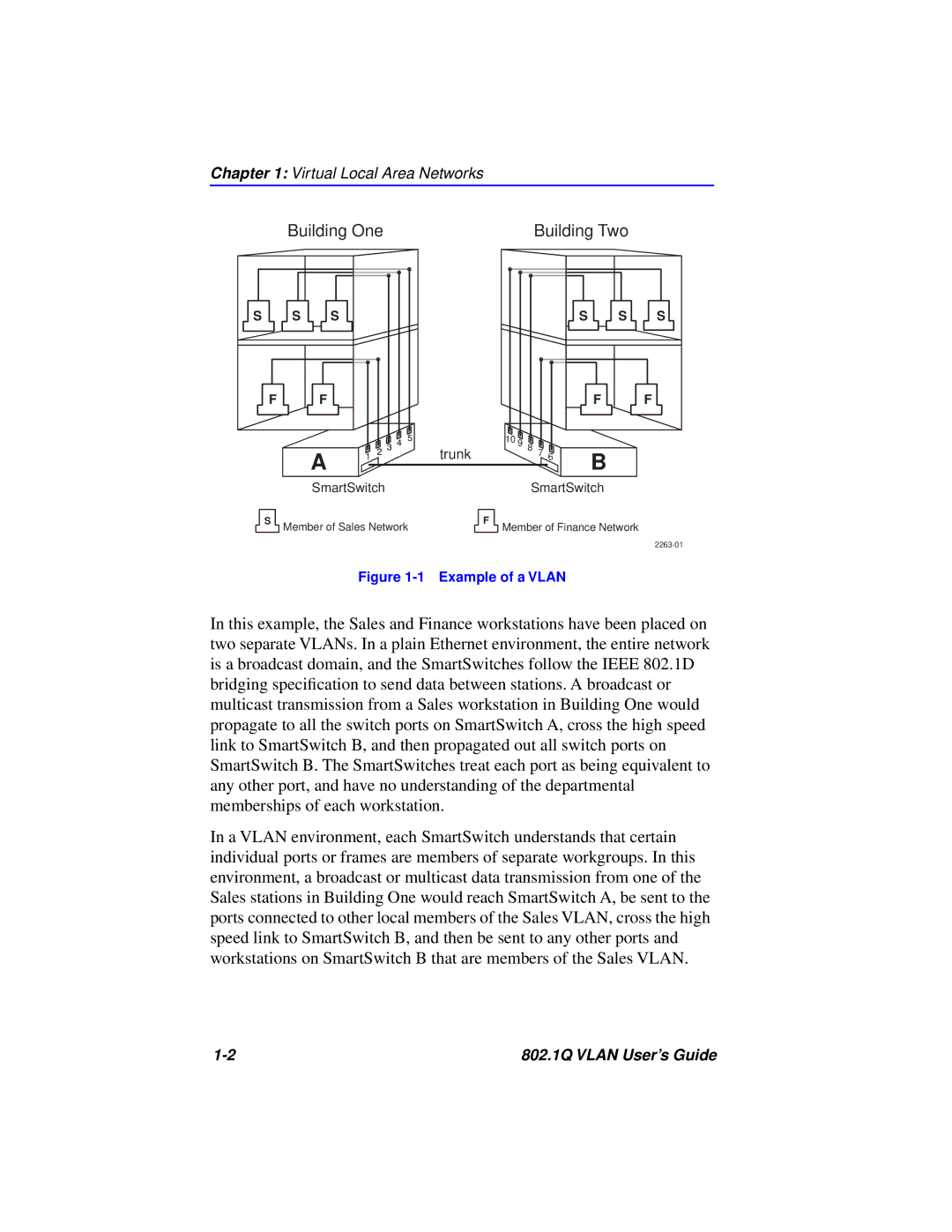
Chapter 1: Virtual Local Area Networks
Building One | Building Two |
S | S | S |
F |
| F |
A | 1 |
|
trunk | 10 9 | 8 7 6 |
|
S | S | S |
F |
| F |
B
SmartSwitch
SmartSwitch
S | Member of Sales Network | F | Member of Finance Network |
|
|
Figure 1-1 Example of a VLAN
In this example, the Sales and Finance workstations have been placed on two separate VLANs. In a plain Ethernet environment, the entire network is a broadcast domain, and the SmartSwitches follow the IEEE 802.1D bridging specification to send data between stations. A broadcast or multicast transmission from a Sales workstation in Building One would propagate to all the switch ports on SmartSwitch A, cross the high speed link to SmartSwitch B, and then propagated out all switch ports on SmartSwitch B. The SmartSwitches treat each port as being equivalent to any other port, and have no understanding of the departmental memberships of each workstation.
In a VLAN environment, each SmartSwitch understands that certain individual ports or frames are members of separate workgroups. In this environment, a broadcast or multicast data transmission from one of the Sales stations in Building One would reach SmartSwitch A, be sent to the ports connected to other local members of the Sales VLAN, cross the high speed link to SmartSwitch B, and then be sent to any other ports and workstations on SmartSwitch B that are members of the Sales VLAN.
802.1Q VLAN User’s Guide |
